What is a Heat Pump? Types, Advantages & Limitations
-
Shea Cummings
- Last updated:
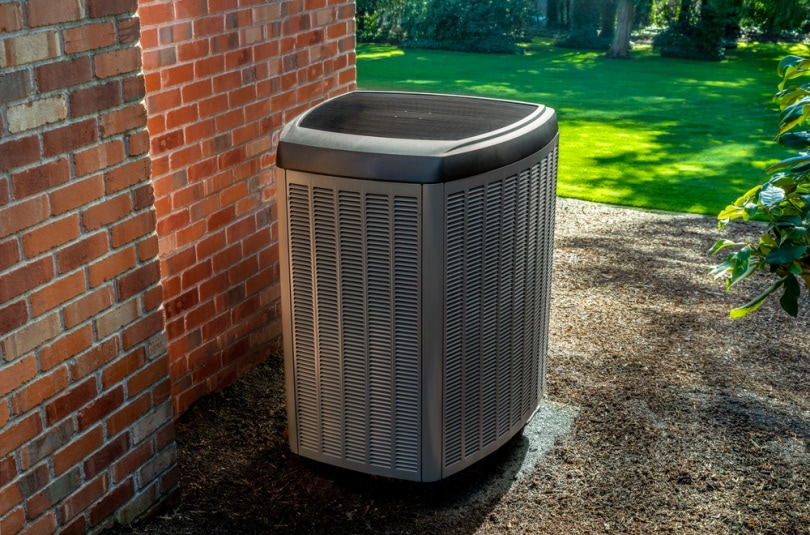
If you’re looking for more ways to save on your energy bill throughout the year, there’s something to be said for heat pump efficiency. If you’re not familiar with heat pumps, not only do they provide heat during the colder months, but when they’re in cooling mode, they are functionally the same as an air conditioner.
A heat pump is not ideal for every situation, because it does have some limitations. However, after reading this article, you’ll know how a heat pump works, its pros and cons, and whether it’s right for you.
How Does it Work?
Put simply, a heat pump exchanges cool air from outside, warms it up, and spreads it around inside. Or, when put in cooling mode, it will take warm air from inside and exchange it with air from outside so that it cools.
Several components go into this process. We’ll go over them in more detail so you have an idea of the type of maintenance required if you go with a heat pump.
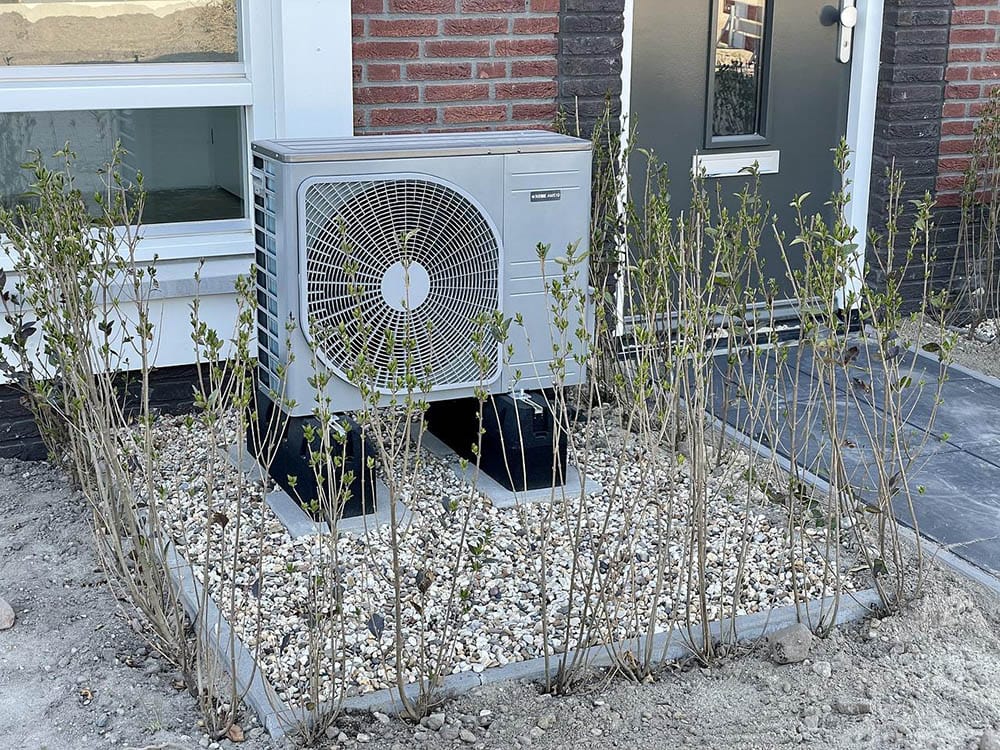
Outdoor and Indoor Units
The two main or larger components of a heat pump are the indoor and outdoor units. Both are equipped with coils and fans. The coil acts as a condenser in the outdoor unit that cools the air in cooling mode or an evaporator in heating mode. And the fan moves air across the coil
With the indoor unit, it’s the opposite. The coil is an evaporator in cooling mode and a condenser in heating mode. In addition to the fan moving air through the coil, the indoor unit’s fan moves air through the duct in your home if that’s how it’s set up.
Refrigerant and Compressor
You may be familiar with refrigerants if you’ve ever recharged the air conditioning system in your car. It’s the same principle in a heat pump. The refrigerant is responsible for absorbing the heat as the air circulates through the pump.
The compressor system ensures the refrigerant is pressurized and moving through the system. A refrigerant leak is detrimental because the pressure from the compressor will push it all out of the system.
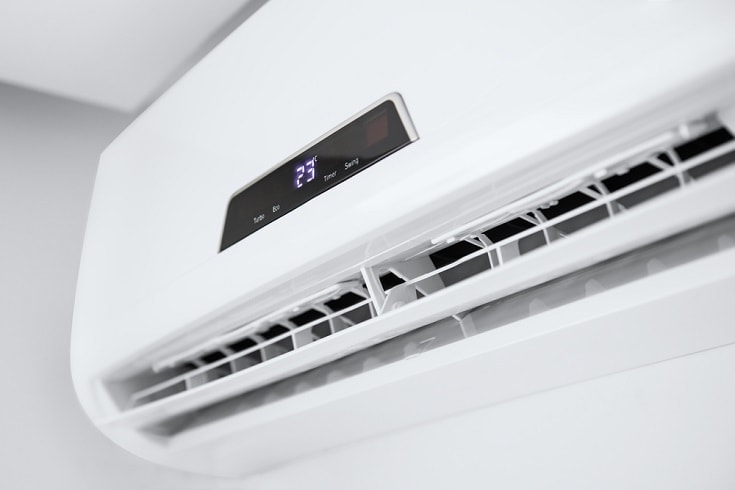
Valves
There are two main valves in a heat pump system. One is the reversing valve, and the other is an expansion valve. The heat pump’s efficiency goes down if either valve stops working properly.
The reversing valve allows the heat pump to heat and cool. Essentially, it reverses the flow of refrigerant. The expansion valve is a metering valve. As the refrigerant flows through the system, the expansion valve reduces or increases the pressure and changes the temperature of the refrigerant.
What are the Different Types of Heat Pumps?
There are many different models of heat pumps. Each of them has different efficiency ratings and capabilities for heating and cooling. But among all these models, there are essentially three types of heat pumps determined by their source: air, ground, and water (geothermal for ground and water).
Air
One of the most common heat pumps you will see is air-sourced, and there are two main types. The first is a ducted heat pump. As the air is heated or cooled, it’s sent through ductwork in the house to heat or cool everywhere.
If your home doesn’t have ducts and you want a more DIY-friendly option, there is a ductless heat pump option available called a mini-split heat pump. Essentially the outside unit will push air through a duct to a wall-mounted unit.
A ductless is a heat pump system that will be ideal for a single room or a couple of rooms instead of an entire house.
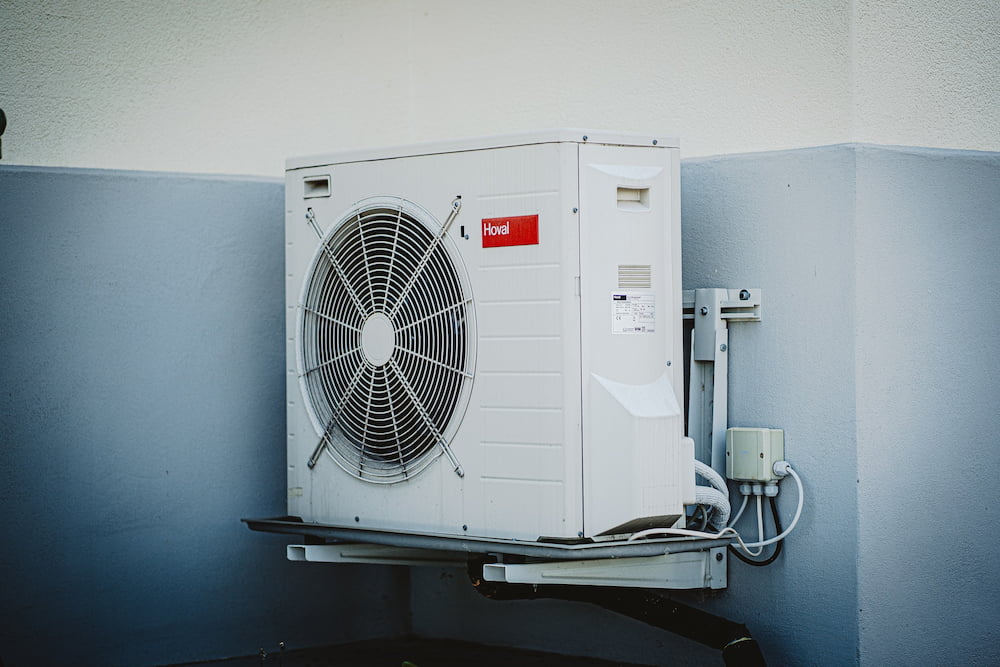
Geothermal
Geothermal heat pump efficiency and low ongoing cost are outstanding due to the often stable ground or water temperatures. The downside to geothermal heat pumps is a significantly higher installation cost than an air-sourced heat pump.
Overall, if you’re able, a geothermal heat pump is the better option. They are less susceptible to a heat pump’s limitations, such as cold weather.
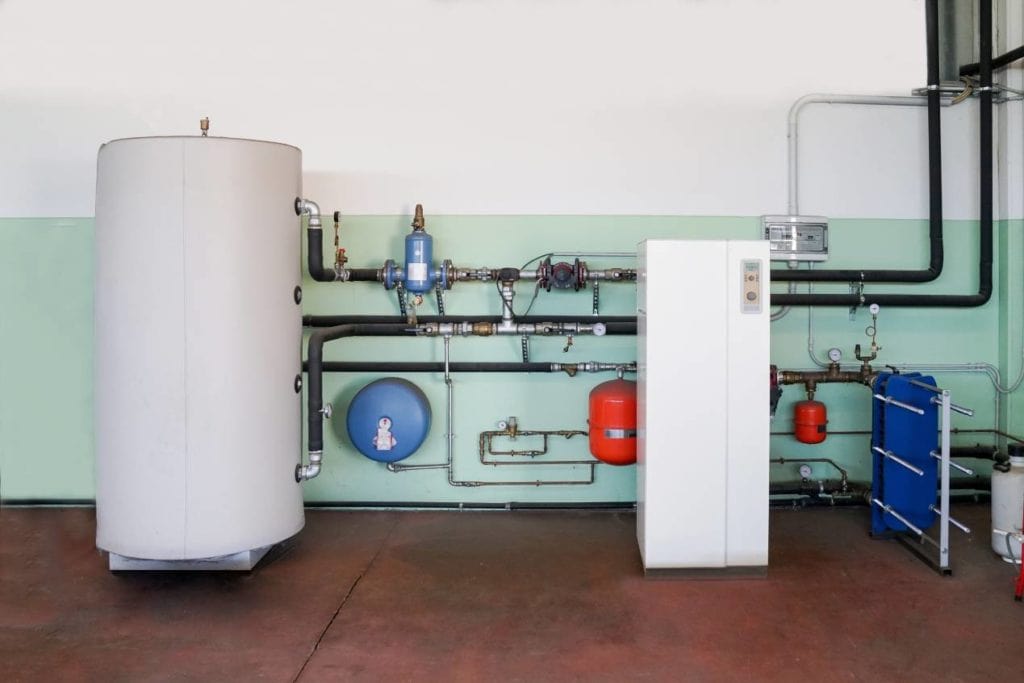
Advantages of Heat Pumps
Even if you’re not using a heat pump as your primary heating source, there are several advantages to using one—even part of the year if the winters get cold in your area.
- Efficiency: Heat pump efficiency is often one of the first positives that someone will start talking about because of how little energy a heat pump uses compared to the amount of heat and cooling it provides. They are almost always more efficient than a competing air conditioner or furnace.
- Cooling: Unlike an air conditioner that only cools—and often not efficiently—a heat pump cools in addition to its heating.
- Emissions: While they are not emissions-free, most heat pumps have lower carbon emissions than other heating sources.
- Long life: Some heat pump manufacturers state that their pumps will last up to 50 years! However, the average lifespan is around 14–15 years, which is still a pretty decent life for the value it provides.
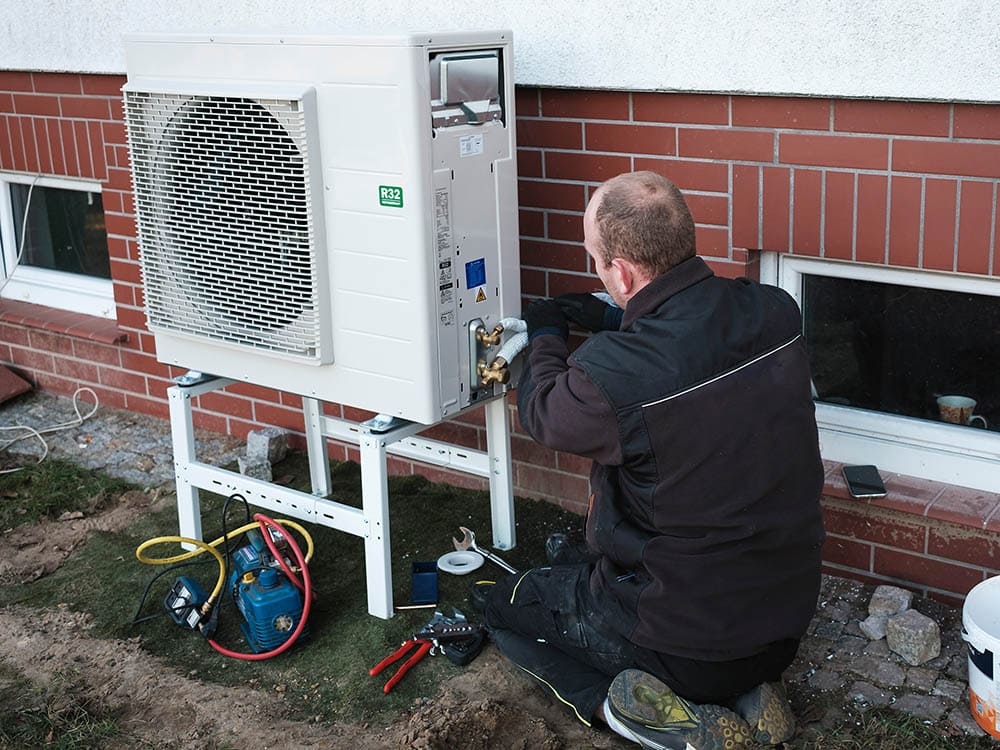
Limitations of a Heat Pump
For all the positives of using a heat pump, they aren’t without their limitations as well. Some of these are minor, while others will make you question whether a heat pump is right for you.
- Cold weather: A heat pump will have no problem heating your home until the temperature starts dropping below 32°F (0°C). But once it gets colder, you will run into problems like the coils freezing up or cold air instead of hot air.
- Expensive: The upfront cost of a heat pump is substantial. Between a professional installation and the unit itself, you have to weigh the value of the savings over time versus the initial cost to determine if a heat pump is right for you.
- Not DIY-friendly: If you like to DIY your home projects, there are a few DIY heat pumps around. But a lot of them are not DIY-friendly for what’s involved between installing the outside and inside units and ducting throughout the house.
- Non-sustainable fluids: If your concern is sustainability, the fluids used in a heat pump are of questionable nature. That being said, there are some biodegradable options around that help offset this.
FAQ
Do I Still Need a Furnace With a Heat Pump?
As long as the temperature outside doesn’t drop below 32°F (0°C), a heat pump will be an efficient way to heat your home. However, if it does get colder, you’ll need to supplement the heating with a furnace or another heating source.
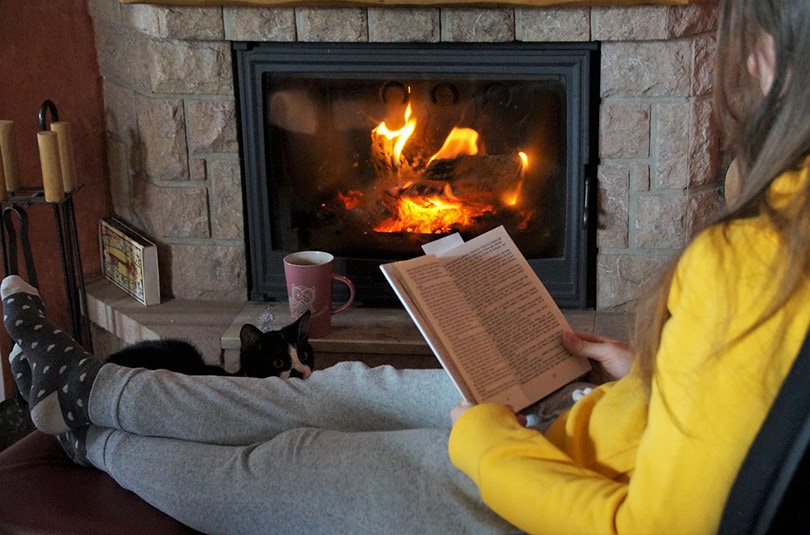
How Does a Heat Pump Work in the Winter?
Heat pump efficiency is nothing to write home about when the temperatures get too cold. Because of how the exchange works, the coil will start freezing up if the air outside gets too cold. So, depending on how cold the winters get where you live, a heat pump won’t always be a viable way to heat—especially not as a primary heating source.
How Is Heat Pump Efficiency Compared to an Air Conditioner?
You might be thinking that an air conditioner would be more efficient at doing the only job it’s designed to do. However, that’s not typically the case. A heat pump will usually operate more efficiently by using less energy to cool the same amount.
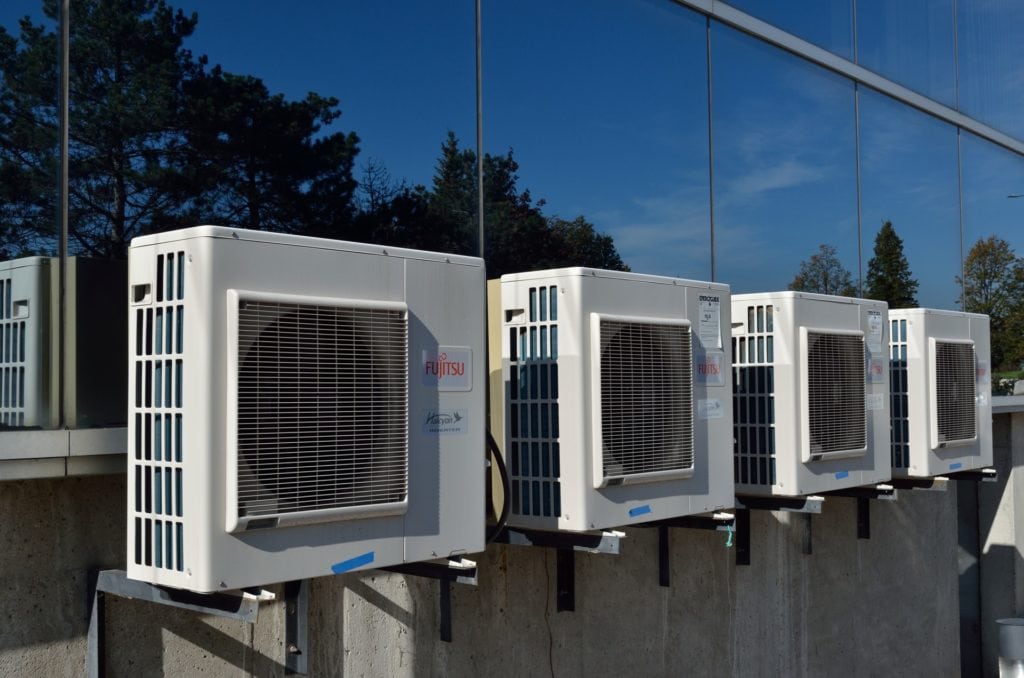
Can a Heat Pump Heat the Entire House?
Yes and no. If you opt for a mini-split ductless heat pump, it will only heat or cool a small area. However, if you have a ducted heat pump—air or geothermal-sourced—it will heat and cool your entire house without any issues.
If this is the goal, it’s probably a good idea to call a professional. An HVAC technician will ensure that the correct type and size are installed.
Conclusion
Now you know why many people talk about a heat pump’s efficiency. A heat pump isn’t the answer for everyone, but if its limitations don’t scare you away and you’re looking for an energy-saving way to heat and cool your home, it is worth the consideration.
- Related Read: What is a Heat Pump Dryer? How Does it Work?
- https://www.carrier.com/residential/en/ca/products/heat-pumps/how-does-a-heat-pump-work/
- https://www.nrcan.gc.ca/energy-efficiency/energy-star-canada/about/energy-star-announcements/publications/heating-and-cooling-heat-pump/6817
- https://blackdiamondtoday.com/do-i-need-a-furnace-if-i-have-a-heat-pump
- https://palmdesertac.com/blog/what-you-should-know-about-using-your-heat-pump-in-the-winter
- https://www.greenmatch.co.uk/blog/2014/08/heat-pumps-7-advantages-and-disadvantages
- https://www.energy.gov/energysaver/heat-pump-systems#:~:text=There%20are%20three%20main%20types,concentrate%20it%20for%20use%20inside.
Featured Image Credit: David Papazian, Shutterstock
Contents
